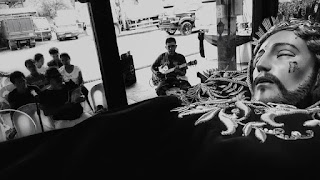IKATLONG LINGGO NG PAGKABUHAY A
--> PAG-ASA SA MGA PUSONG WASAK Madalas na nating marinig ang kuwento ngayon (Lk. 24: 13-35) tuwing Pagkabuhay. Pag narinig natin ang salitang Emaus, tila alam na natin ang buong kuwento ng dalawang alagad na lumayo mula sa Jerusalem at sa daan ay sinabayan sila ni Hesus at sinaluhan sa hapunan. Pero teka, muli nating pagmasdan ang ganda ng salaysay na ito. Kay Lukas lamang ito makikita, at ito ang pinakamahabang kuwento ng Pagkabuhay. Dito hindi lamang nagpakita ang Panginoon kundi nagbigay pa ng turo tungkol sa kanyang paghihirap at pagkabuhay at ang kaugnayan nito sa plano ng Ama. Ang “dalawang” alagad na naglalakbay ay kabilang sa mga alagad na hindi agad naniwala sa sinabi ng mga babae. Nasiphayo sila kaya nais nilang lumayo sa Jerusalem. Pero habang naglalakad, si Hesus pa rin ang kanilang paksa ng usapan. At biglang sumabay sa kanila si Hesus. Hindi nila nakilala ang Panginoon. Iba kaya ang itsura niya noon? Pero sabi ni Lukas, ang prob


